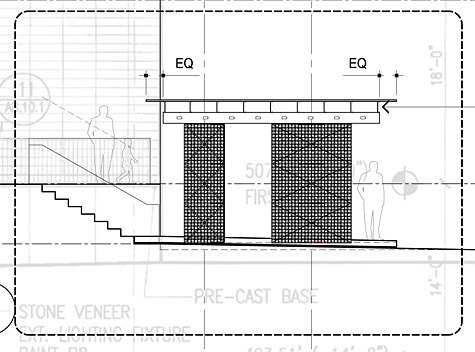
WHO: Architecture faculty from Washington University’s Sam Fox School of Design & Visual Arts and employees and volunteers from Tarlton Corporation.
WHAT: Make a House Intelligent prototype construction, in conjunction with the upcoming exhibition Design with the Other 90%: CITIES.
WHERE: West side of the Mildred Lane Kemper Art Museum, located near the intersection of Lindell and Skinker boulevards.
WHEN: Beginning 7 a.m. Saturday, Aug. 18, and continuing throughout the day.
MEDIA AVAILABILITY: Peter MacKeith, associate dean of the Sam Fox School and exhibition curator for the Kemper presentation of Design with the Other 90%: CITIES; and construction volunteers. To arrange an interview or b-roll, call Liam Otten at 314-935-8494 (office); 314-324-2076 (cell) or 314-863-4296 (home); or email liam_otten@wustl.edu.
ABOUT THE PROJECT:
More than half of Mexico City’s 20 million inhabitants live in informal settlements known as colonias populares. In 2008, architect Arturo Ortiz Struck and the urban research firm Taller Territorial de México designed Make a House Intelligent, a simple structure that could be built quickly and inexpensively by small teams of people.
On Saturday, Aug. 18, architecture faculty from Washington University’s Sam Fox School of Design & Visual Arts and employees and volunteers from Tarlton Corporation will construct an example of Struck’s design on the western side of the university’s Mildred Lane Kemper Art Museum.
The project comes as part of Design with the Other 90%: CITIES, a major survey exhibition — opening at the Kemper Art Museum Sept. 14 — that illustrates the profound, transformative and sometimes lifesaving power of innovative design. Collecting dozens of smart, problem-solving projects from around the globe, the exhibition aims to expand contemporary definitions of just what constitutes “good design.”
Struck’s house, for example, employs simple, locally available materials in highly flexible ways while also allowing for natural ventilation and illumination. The primary structure consists of sand, concrete blocks, gabions (metal mesh retaining structures) and steel beams. Secured steel beams provide structure for the inclined sheet-metal roof. Concrete blocks and a layer of sand over compacted soil provide the interior flooring.
ORGANIZERS AND SUPPORTERS
The Make a House Intelligent project in St. Louis was made possible by Tarlton Corporation with additional support from Ben Hur Construction Company, John J. Smith Masonry,Kirberg Roofing Company and Rock Hill Mechanical Corporation.
Design with the Other 90%: CITIES was organized by Cynthia E. Smith, the Smithsonian’s Cooper-Hewitt, National Design Museum’s curator of socially responsible design. It has been adapted for the Mildred Lane Kemper Art Museum by Peter MacKeith, adjunct associate curator of architecture and design at the Kemper Art Museum and associate dean and associate professor of architecture at the Sam Fox School of Design & Visual Arts. The exhibition will be on view from September 14, 2012, through January 7, 2013.
Design with the Other 90%: CITIES was organized by the Smithsonian’s Cooper-Hewitt, National Design Museum. This exhibition’s presentation at the United Nations was sponsored by Citi. Generous support was provided by the Rockefeller Foundation. Additional funding was provided by Procter & Gamble, Deutsche Bank, Smithsonian 2.0 Fund, the Albert Kunstadter Family Foundation, and Smithsonian Institution’s Research Opportunity Fund.
Support for the exhibition at the Mildred Lane Kemper Art Museum is generously provided by I-CARES at Washington University in St. Louis; the Charles and Bunny Burson Art Fund at the Sam Fox School of Design & Visual Arts; the Missouri Arts Council, a state agency; James M. Kemper, Jr.; the David Woods Kemper Memorial Foundation; John and Anabeth Weil; the Hortense Lewin Art Fund; and members of the Mildred Lane Kemper Art Museum. Further generous support is provided by additional units of Washington University: the Office of the Provost, the Office of the Executive Vice Chancellor for Administration, the Institute for Public Health, the Center for Social Development, and the Skandalaris Center for Entrepreneurial Studies.